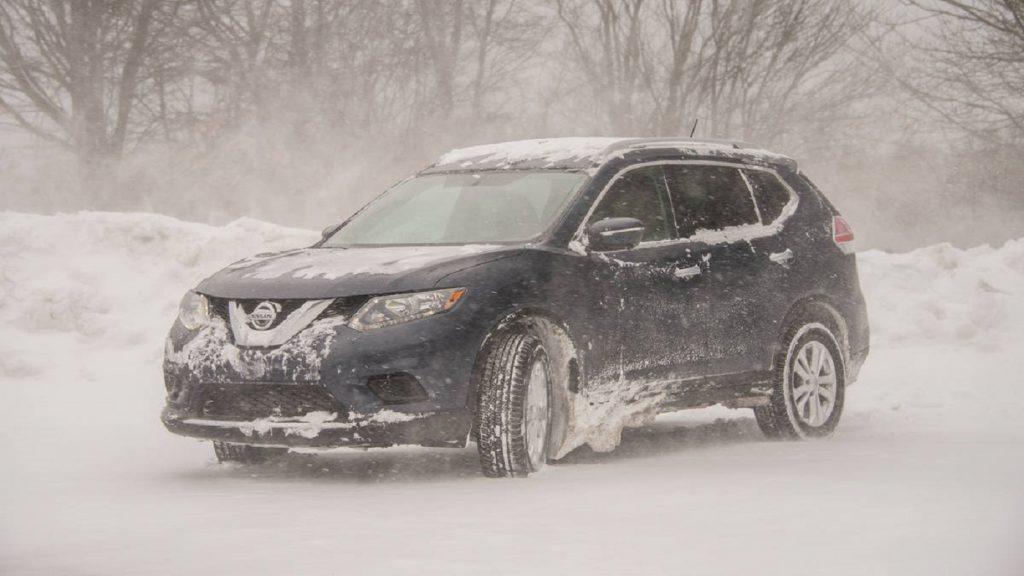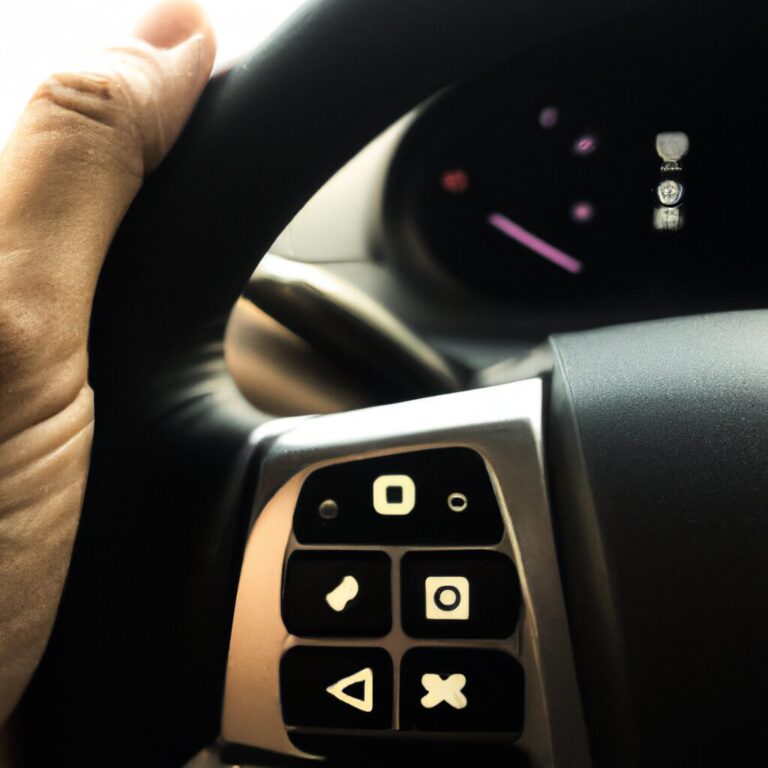How to Drive Fwd in Snow
To drive forward in snow, ensure tires have good traction by using snow chains or snow tires. Adjust driving speed to prevent skidding.
When winter arrives, driving in snowy conditions becomes a challenge that many motorists face. The slick roads and decreased visibility due to snow accumulation can make it difficult to navigate safely. Whether you are a seasoned driver or someone new to driving in snow, it is essential to know how to effectively drive forward in these conditions.
By following some simple tips and adjustments to your driving style, you can increase your safety on the road and reduce the likelihood of accidents. This article will provide you with practical advice on how to drive forward in snow safely and confidently.
Prepare Your Vehicle
Before venturing out onto snowy roads, it’s crucial to ensure that your vehicle is properly prepared to tackle the challenging conditions. Start by checking your tires and inspecting your windshield wipers to build a strong foundation for safe snow driving.
Check Your Tires
Adequate tire tread and pressure are essential for traction in snowy conditions. Ensure your tires are properly inflated to the manufacturer’s specifications. Inspect the tread depth and look for any signs of wear or damage. If the tread is worn, consider investing in a set of snow tires to enhance grip on slippery surfaces. Additionally, check your tire chains if you plan to drive through heavy snow or icy roads.
Inspect Your Windshield Wipers
Clear visibility is vital when driving in snow, so it’s essential to ensure that your windshield wipers are in top condition. Check the rubber blades for signs of wear and tear, and replace them if necessary. Make sure the wiper fluid reservoir is filled with a winter-grade solution to ensure effective cleaning of your windshield during snowy conditions.

Credit: m.youtube.com
Drive Smoothly
Accelerate And Decelerate Slowly
Slowly pressing the gas and brake pedals prevents skidding.
Maintain A Steady Speed
Keeping a consistent pace helps control your vehicle on snowy roads.
Increase Your Following Distance
Increase your following distance is crucial when driving in snowy conditions to ensure safety.
Keep A Safe Distance From The Vehicle Ahead
Always maintain a safe distance from the vehicle in front of you to avoid potential accidents.
Double The Normal Following Distance
Double the average following distance to allow ample time to react to unexpected situations on snow-covered roads.
Use Your Brakes Strategically
Driving in snow can be a challenging task, especially when it comes to using your brakes strategically. Snowy conditions require a different approach to braking compared to driving on regular roads. By employing the right techniques, you can maintain control of your vehicle and ensure a safe journey despite the slippery conditions. Let’s explore how to use your brakes effectively when driving forward in snow.
Avoid Sudden Braking
Sudden braking can lead to loss of control on snow-covered roads. When you need to slow down or stop, anticipating and gradually applying the brakes is essential. Sudden braking can cause your wheels to lock up, leading to skidding or sliding. To avoid this, practice gentle, gradual braking and allow sufficient time for your vehicle to come to a stop.
Apply Brakes Lightly And Early
Applying brakes lightly and early when approaching a stop or slowed traffic is crucial in snowy conditions. This approach allows you to maintain traction and control while coming to a stop. Slowing down gradually and giving yourself extra space between vehicles will help prevent skidding and potential accidents. By being proactive and anticipating stops, you can navigate snowy roads more safely and confidently.
Know How To Handle Skids
Driving in the snow can be challenging, especially when it comes to maintaining control on slippery roads. One of the most important skills to master in snowy conditions is knowing how to handle skids. If you find yourself in a skid, it’s crucial to stay calm and steer into the skid. Additionally, gently accelerating if the rear of your car skids can help regain control. Here’s what you need to know:
Stay Calm And Steer Into The Skid
When your car starts to skid, it’s natural to feel panicked and want to slam on the brakes. However, this can make the skid worse and cause you to lose control. Instead, stay calm and remember to steer into the skid. This means turning the wheels in the direction that the rear of the car is sliding. For example, if the back of your car is sliding to the right, gently turn your steering wheel to the right.
By steering into the skid, you are essentially aligning the wheels with the direction of the skid. This helps your car regain traction and allows you to regain control. It’s important to make small and smooth adjustments to the steering wheel while maintaining a firm grip on it. Avoid over-correcting the skid, as this can lead to fishtailing and further loss of control.
Gently Accelerate If The Rear Of Your Car Skids
One common type of skid that occurs in snowy conditions is when the rear of your car starts to slide out to the side, known as a rear-wheel skid or fishtail. When this happens, it’s important to resist the urge to hit the brakes hard or abruptly let off the gas. Instead, gently apply pressure to the accelerator pedal to transfer some weight to the rear wheels and regain traction.
By applying gentle acceleration, the weight distribution shifts to the rear wheels, providing them with more grip on the road. This can help straighten out your car and bring it back into control. Be sure to use light and smooth movements with the accelerator pedal, as stomping on it can cause the wheels to spin and worsen the skid.
Remember, the key to handling skids in snowy conditions is to stay calm, steer into the skid, and gently accelerate if the rear of your car starts to slide. By following these techniques, you’ll be better prepared to navigate the challenges of driving in the snow and keep yourself and others safe on the road.

Credit: www.quora.com

Credit: carfromjapan.com
Frequently Asked Questions Of How To Drive Fwd In Snow
Is It Safe To Drive Fwd In Snow?
Yes, it is generally safe to drive a front-wheel-drive (FWD) vehicle in the snow. FWD cars have better traction due to weight and power distribution. However, it’s important to drive cautiously, maintain proper tire grip, and use appropriate safety measures like snow tires or chains.
How Can I Improve My Fwd Traction In The Snow?
To improve FWD traction in the snow, use snow tires for better grip. Decrease tire pressure for increased traction. Add weight to the trunk for better balance. Drive slowly and avoid sudden movements. Keep a safe distance from other vehicles.
How Do You Get Traction In Fwd?
To get traction in FWD, ensure proper tire pressure, maintain balanced weight distribution, and drive smoothly.
How Do I Get My Fwd Car Out Of Snow?
To get a FWD car out of snow, turn off traction control, gently rock back and forth, use traction aids like sand or salt, and try low gear and steady acceleration.
Faq 1: How Do You Drive Forward In Snow?
Driving forward in snow requires maintaining a slow, steady speed, using low gears and gentle acceleration to avoid wheel spin.
Faq 2: How Do You Prevent Getting Stuck In The Snow While Driving?
To prevent getting stuck in the snow while driving, use winter tires, reduce your speed, increase the following distance, and avoid sudden maneuvers.
Faq 3: Can You Drive In Snow With Front-wheel Drive?
Yes, you can drive in snow with front-wheel drive. Just remember to use proper winter tires and be cautious with your acceleration and braking.
Conclusion
Mastering the art of driving in snow requires practice and patience. By following these tips, you can confidently navigate through snowy roads and ensure your safety. Remember to adjust your driving style, maintain a safe distance, and equip your vehicle with proper tires.
With these strategies in mind, you can take on winter driving with ease. Safe travels!

